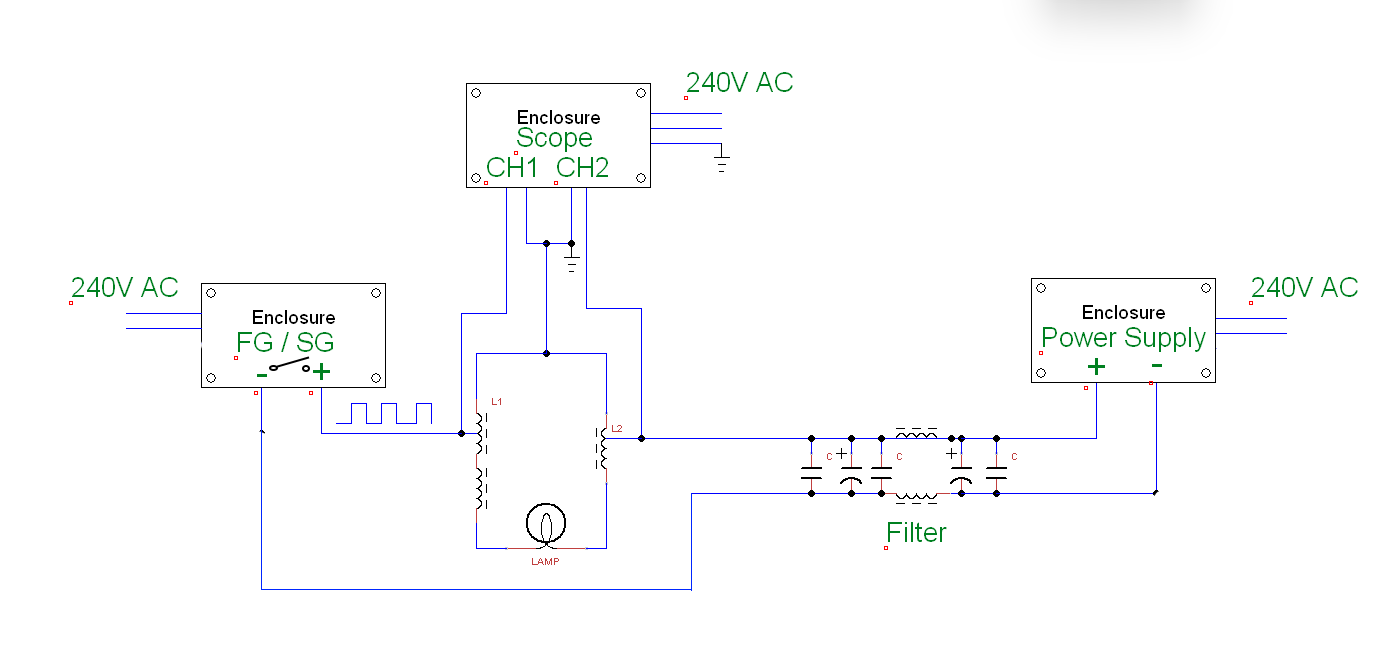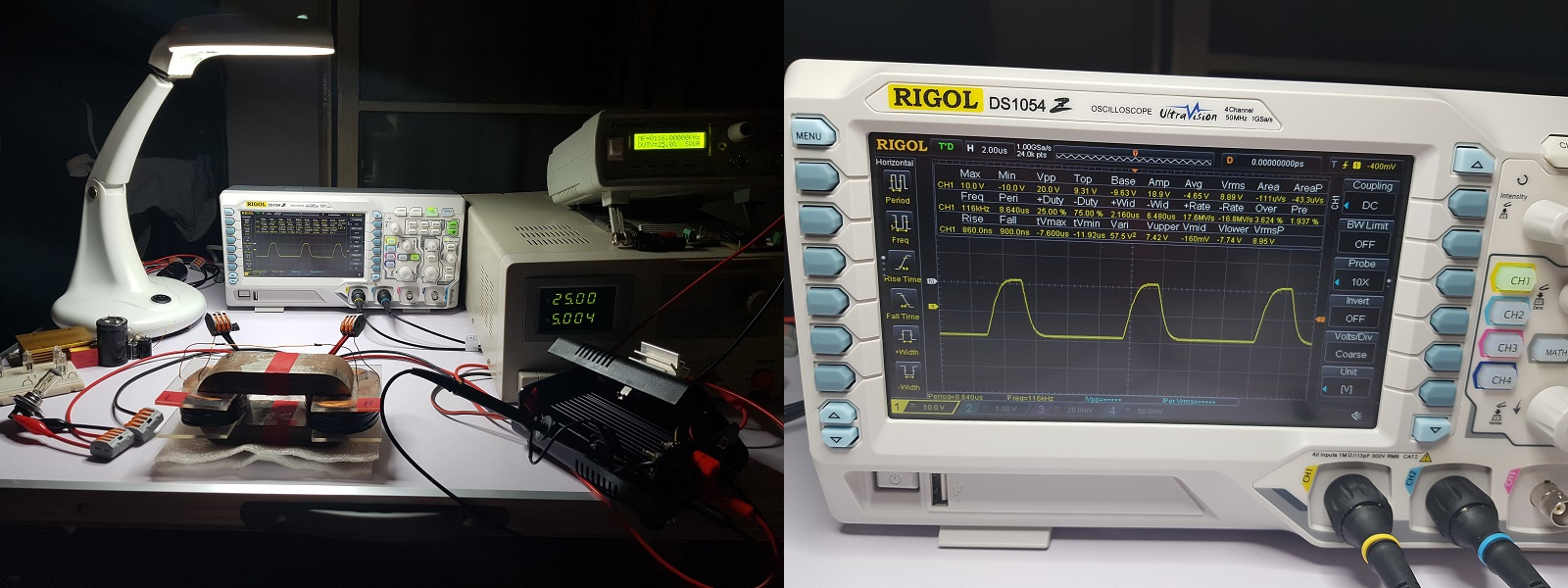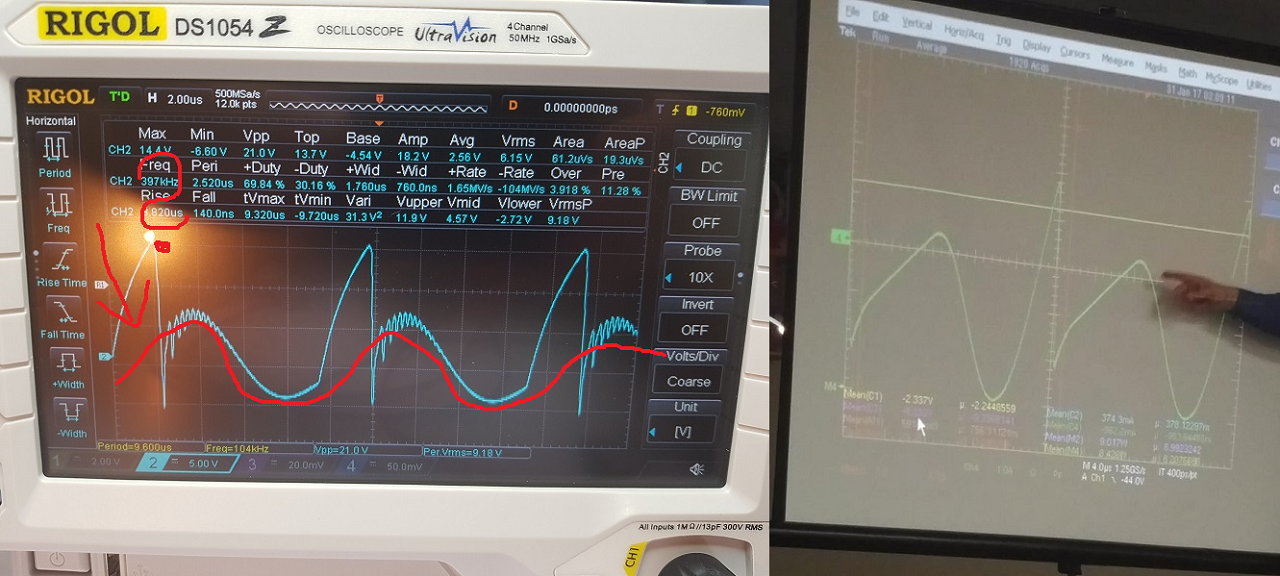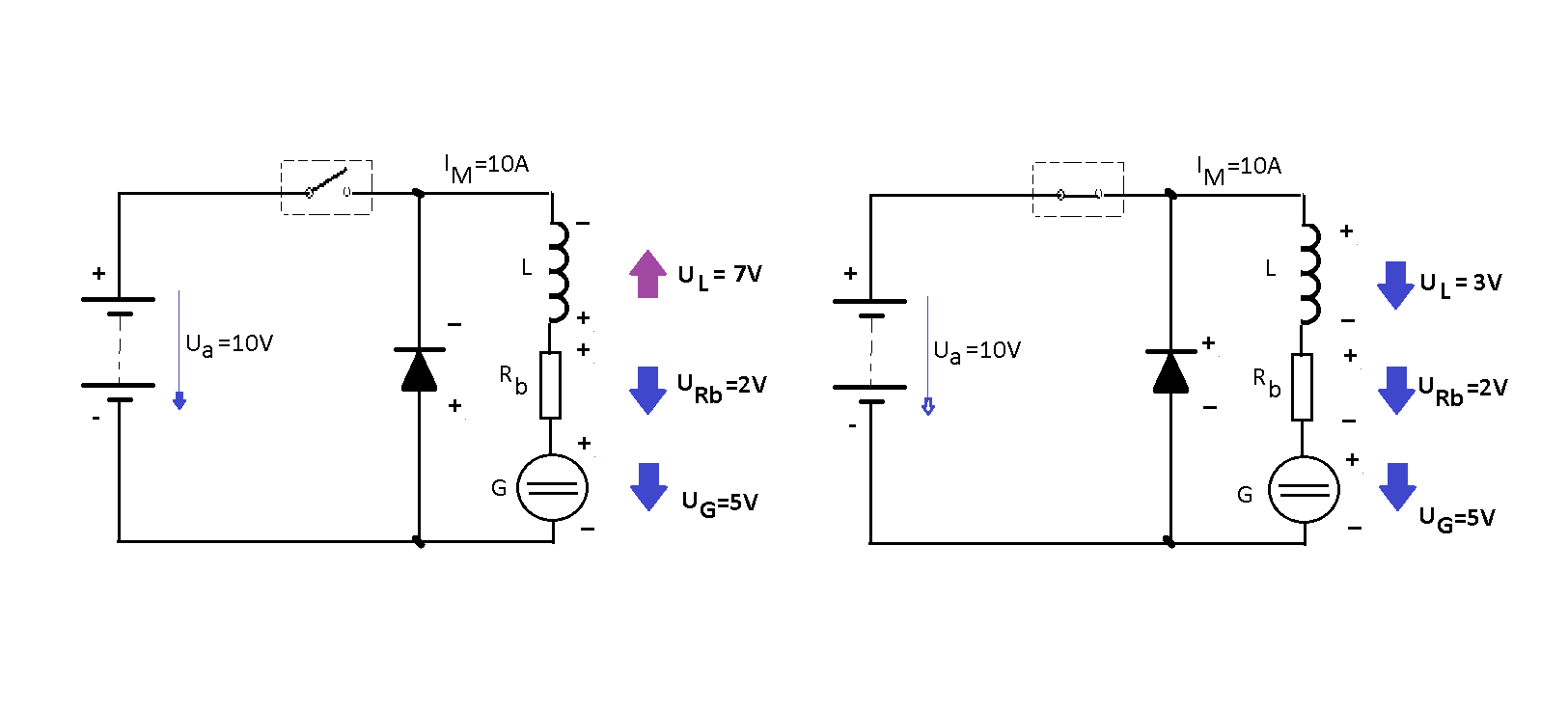Hi everyone.
I just wanted to look at a few things in this simple compilation. As you can see, it's almost the same drawing as the one that Fighter gave us. I played with it a bit.
The core is a tiny Amcc20. Frequency between 90-110Khz. Filling factor 50%. Supply voltage between 20-30 volts. The power supply L-C filter works well. Roll ratio 1:2
Changes caused by parasitic capacitances are inevitable at such a high frequency. You can see them in the two videos. Sometimes the power is increased and sometimes the current is reduced.
Grounding can help in some cases. But the influencing factor must be taken into account during the measurements. It only has an effect above a certain frequency.
This is just for information, but as you can see, there are cases when the current drawn from the power supply is close to zero. There are times when grounding is necessary.
In this oscilloscope examination, I was curious as to where and how the two coils resonate. Or how I see it. Or is it visible at all.
When the current drawn from the power supply is the lowest, the CH2 (blue) channel is at a higher voltage. But this is the coil with less turns. Thus, it should be smaller by default (or at a lower frequency). So when this coil is at a higher voltage, it works on the other coil and charges back to the power supply. (here I deliberately did not say L1 or L2 because only the principle is the point, but this still awaits further investigation)
In some cases, the hump characteristic of parametric excitation can also be observed in the measured signal. Vidura alluded to this in one of his comments.
I have not done the loading according to Fighter or YoElMiCrO. The change is not so spectacular for the load.
It would definitely be necessary to use an iron core with a larger volume and a coil with a larger surface area.
This experiment was just for information on my part. To be continued later.
@Itsu.
As you can see, the current can be reduced to almost zero. Probably also with higher loads. The generator effect can prevail. But there are a lot of questions for me right now.
Atti.








